Abstract
1. The pressures in the ducts of the submaxillary, parotid and sublingual glands were recorded in cats under chloralose anaesthesia. A single stimulus applied to the parasympathetic glandular nerve caused a pressure rise, the size of which increased with the initial pressure. This response was abolished by a small dose of atropine.
2. The effect was not due to salivary secretion, since the single stimulus caused salivation only exceptionally. Repetitive stimulation at frequencies too low to evoke secretion could produce summated pressure responses.
3. The single stimulus applied to the chorda tympani was found to cause vasodilatation in the submaxillary gland. This was abolished by a small dose of atropine, together with the pressure rise in the duct. However, repetitive stimulation still caused marked vasodilatation but no pressure response. It was therefore inferred that the pressure rise obtained before atropine was not due to vasodilatation in the gland.
4. It is concluded that the myoepithelial cells of the salivary glands are supplied with a parasympathetic motor innervation which can cause them to contract.
5. Sympathetic stimulation caused no pressure rise when a single stimulus was given but only when repetitive stimulation was used at a frequency approaching that required for secretion.
Full text
PDF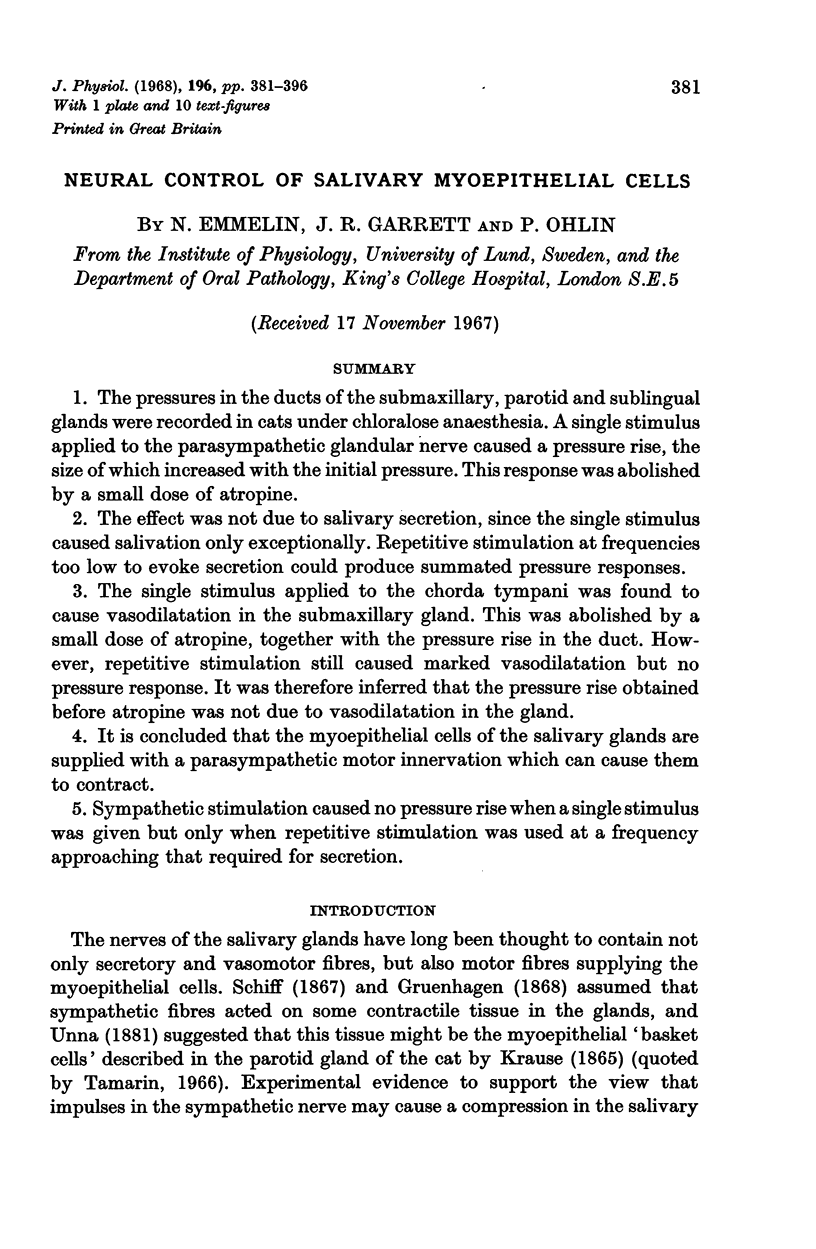
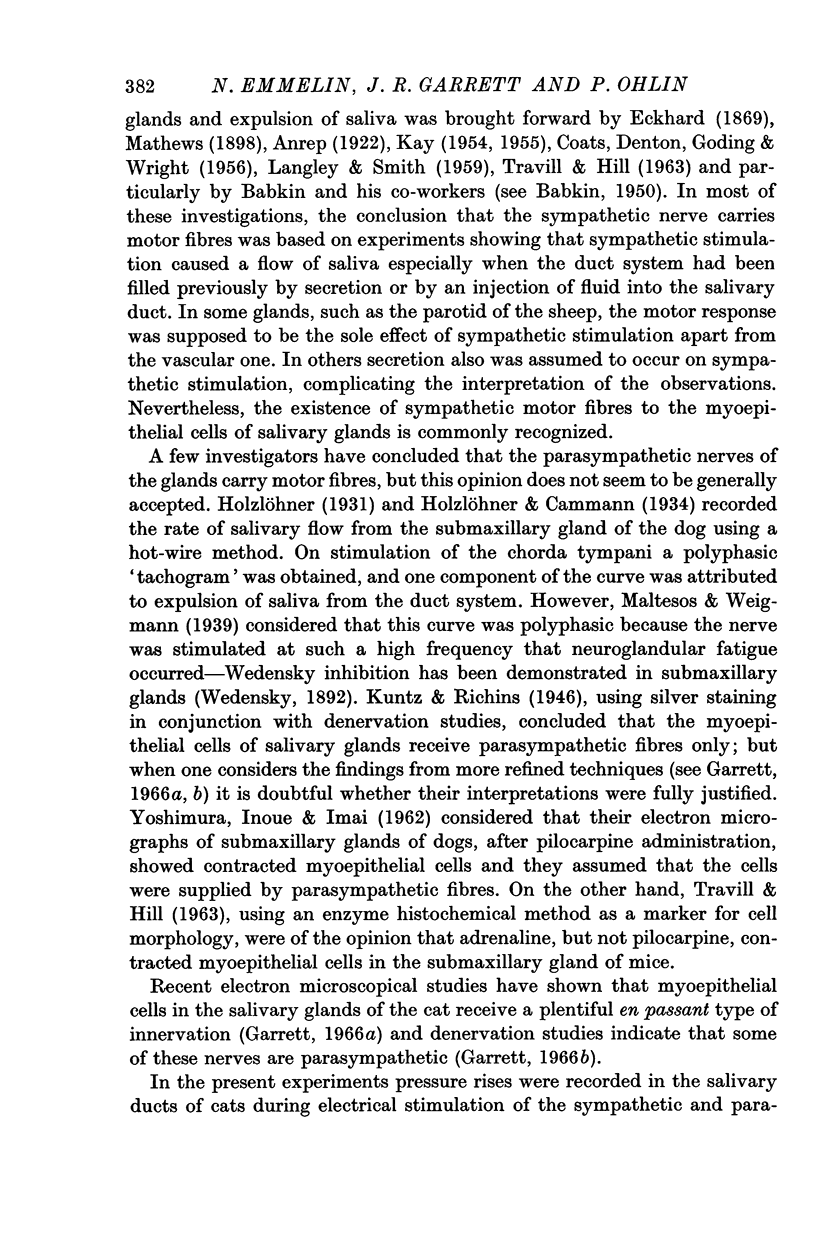
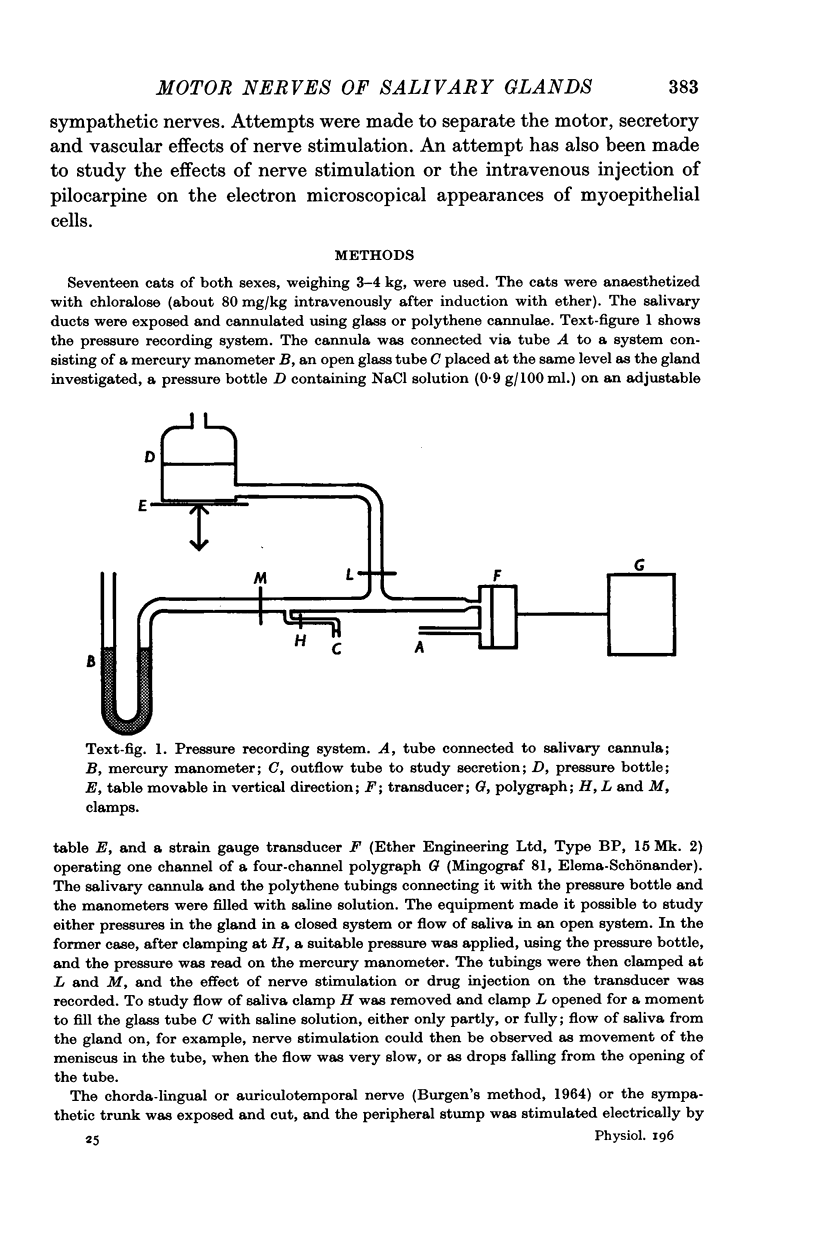
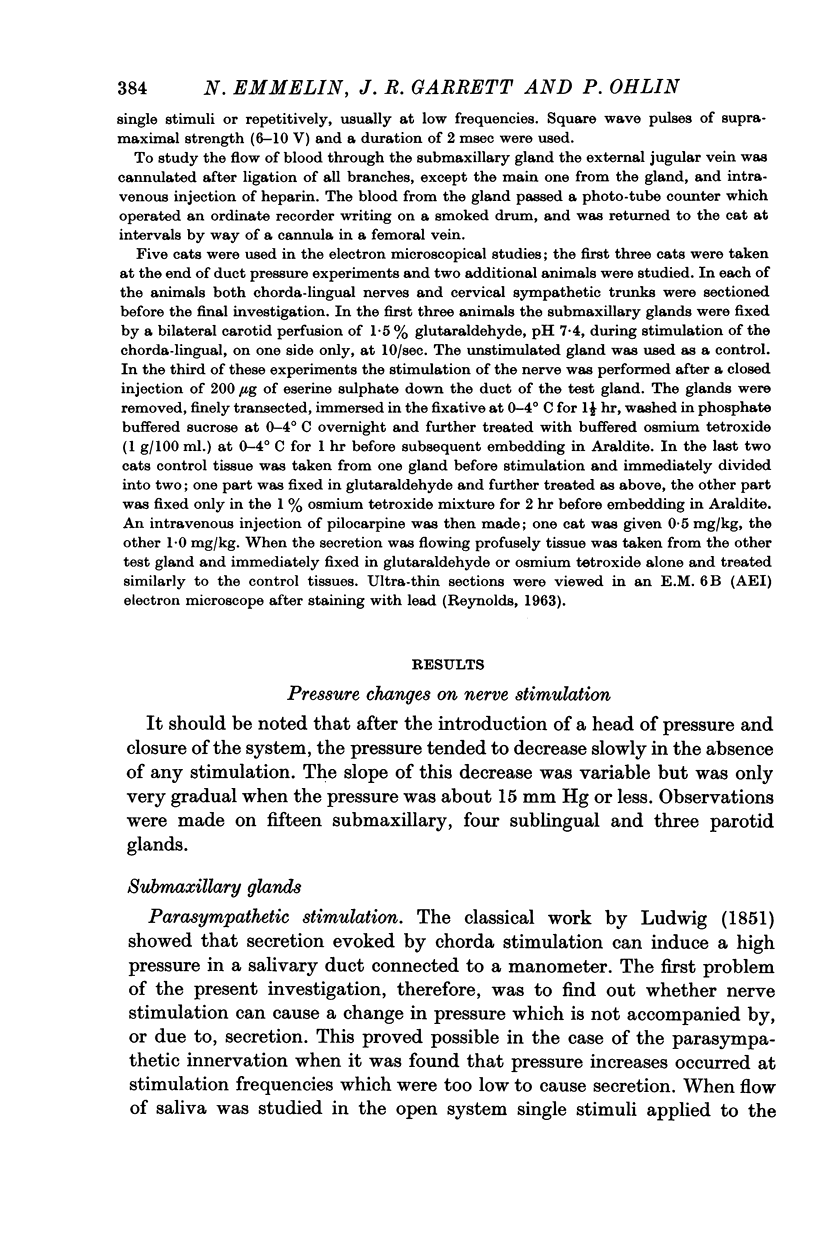
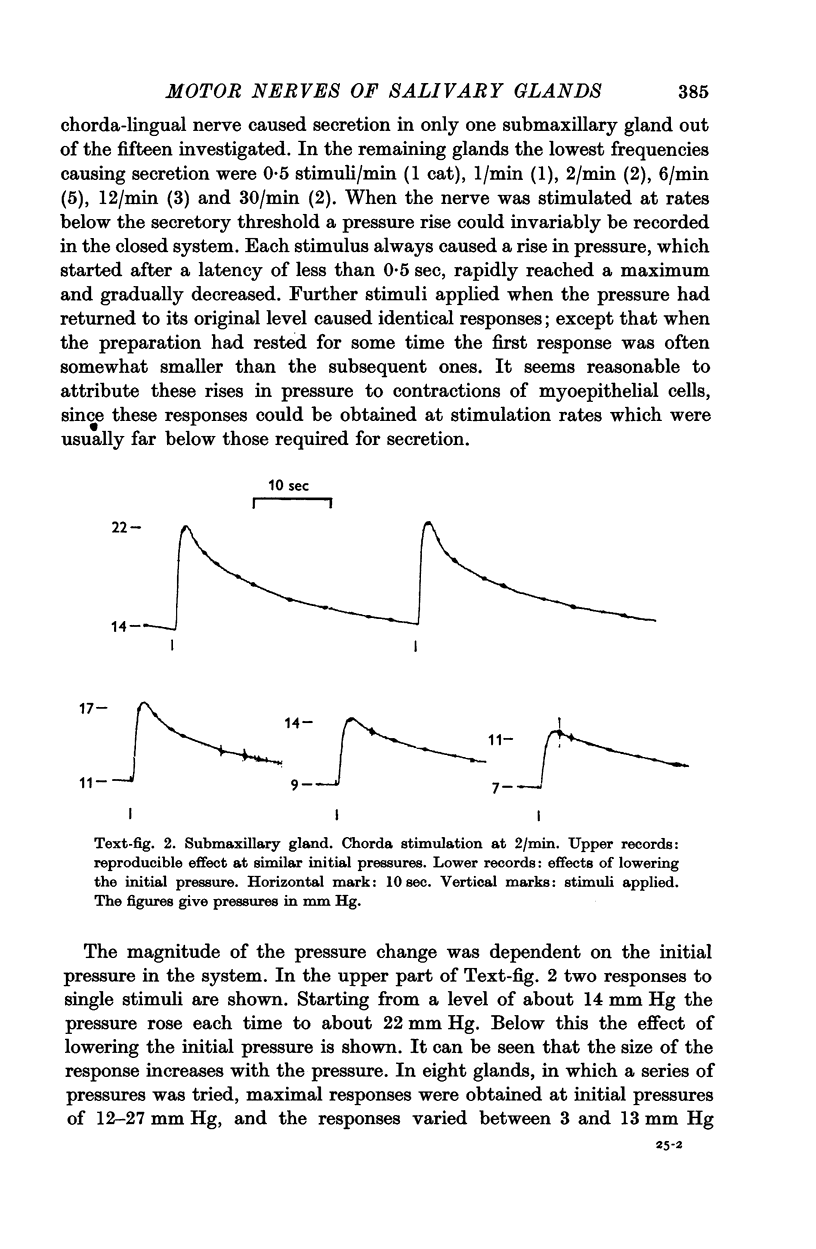
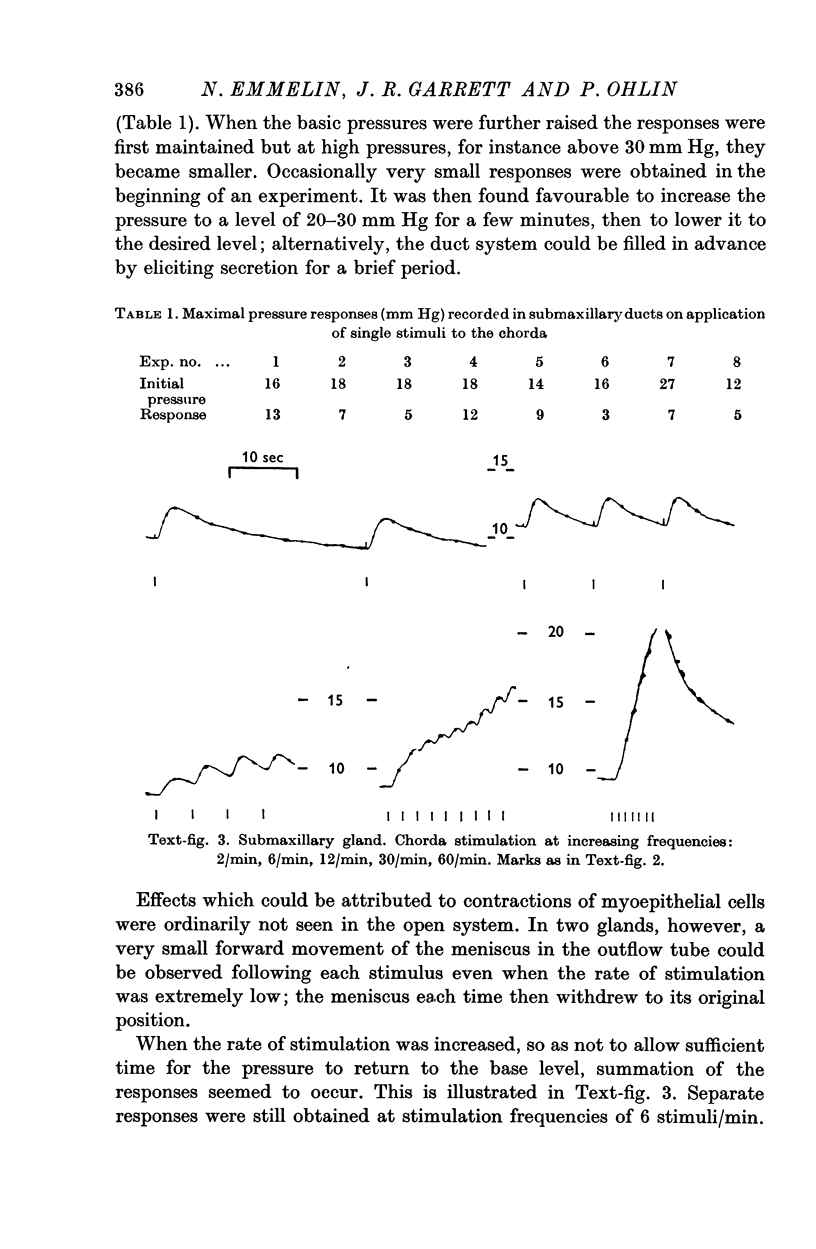
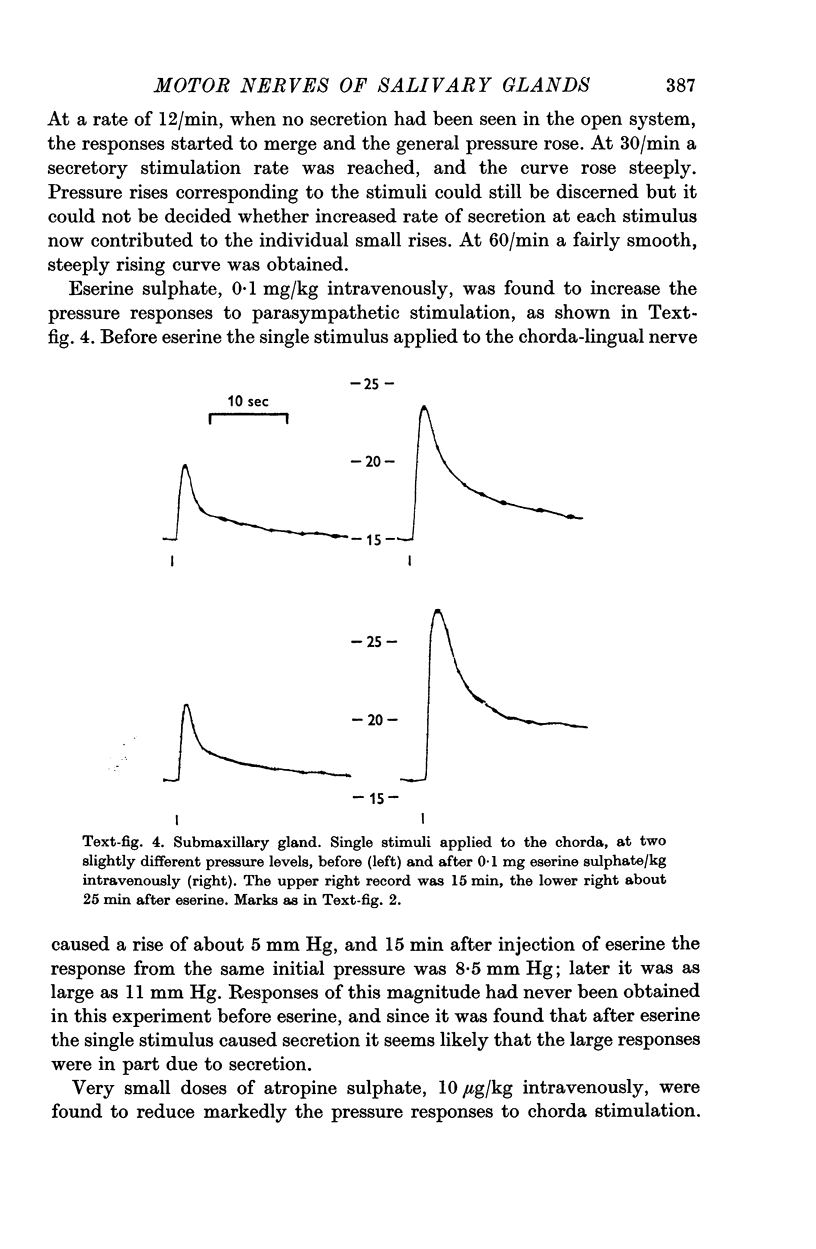
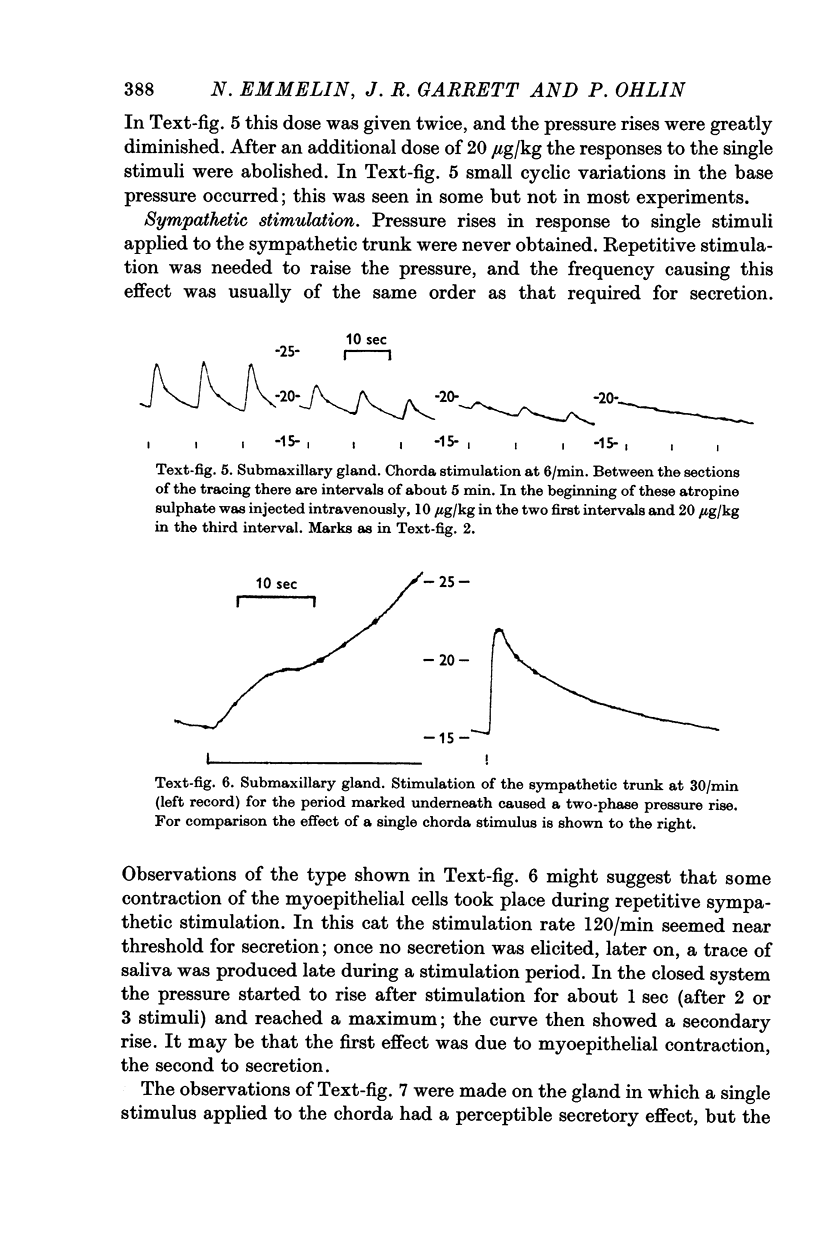
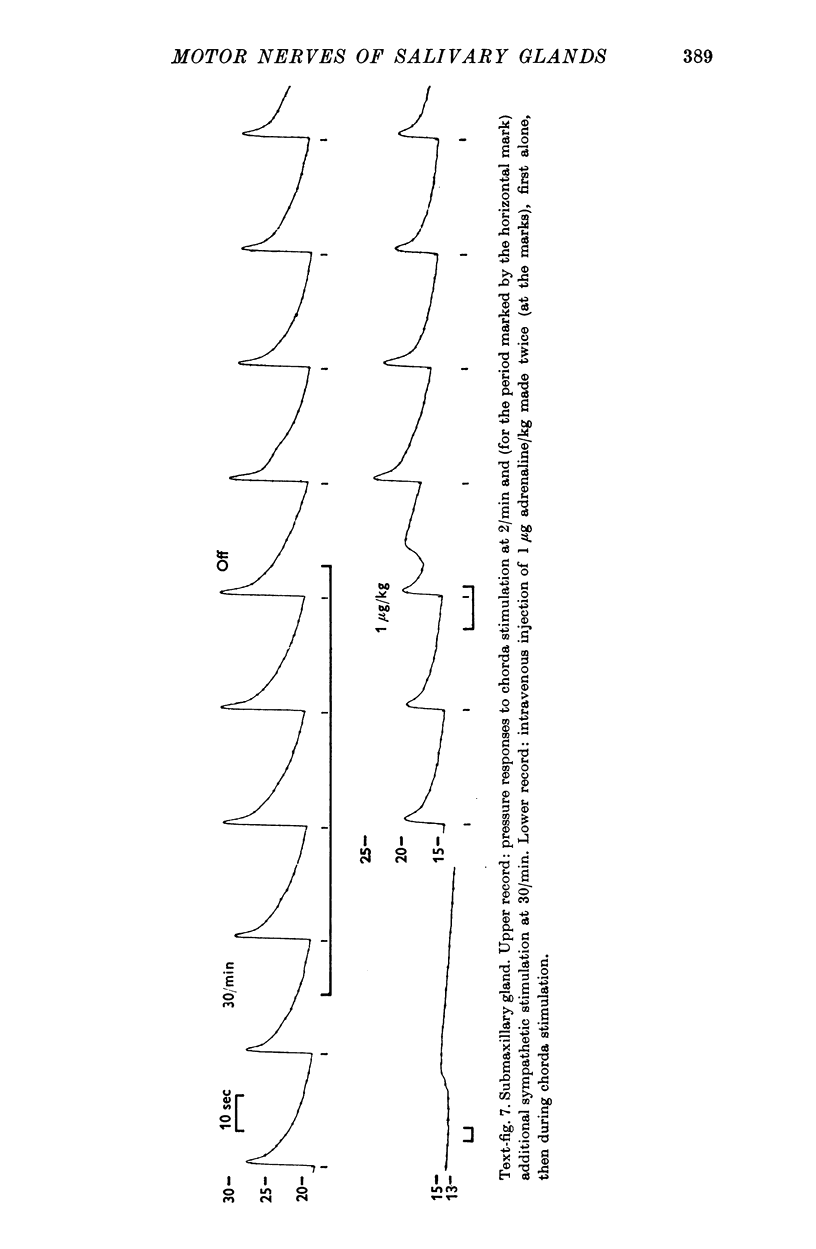
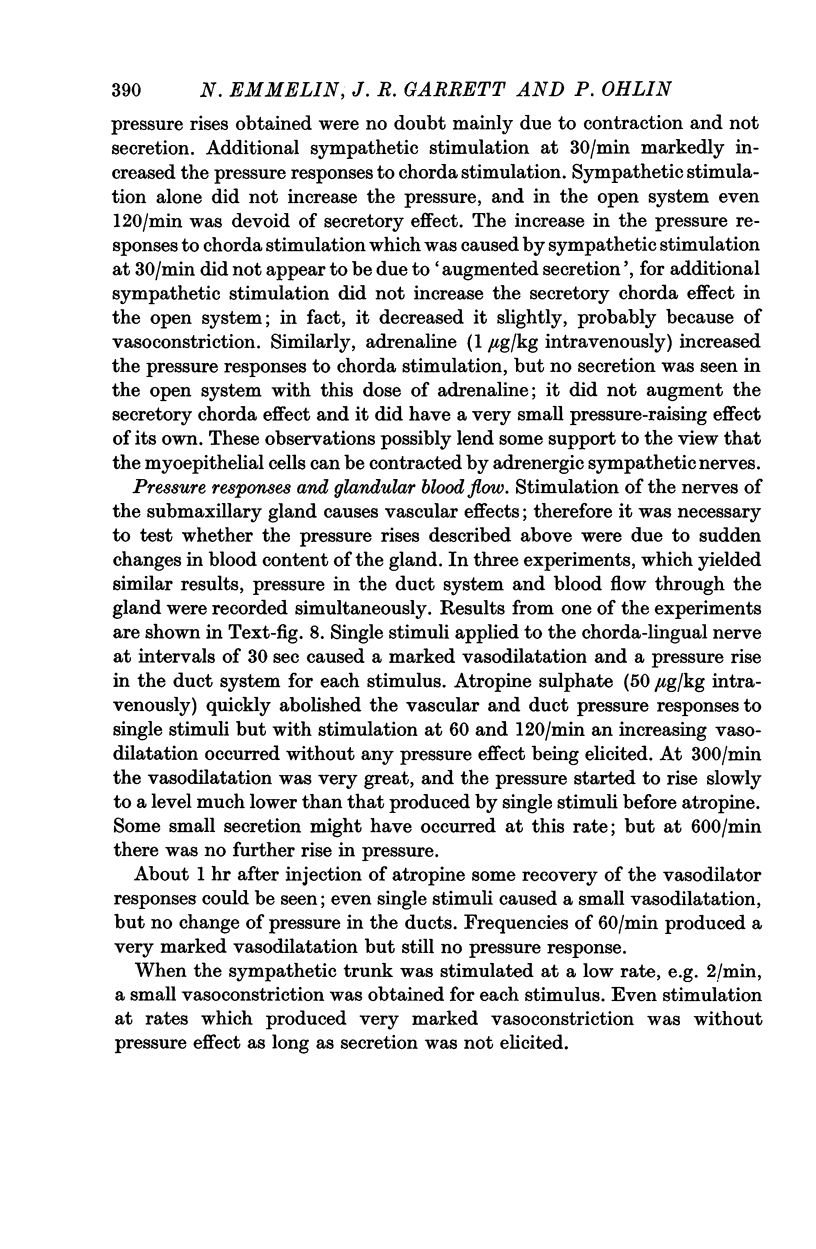
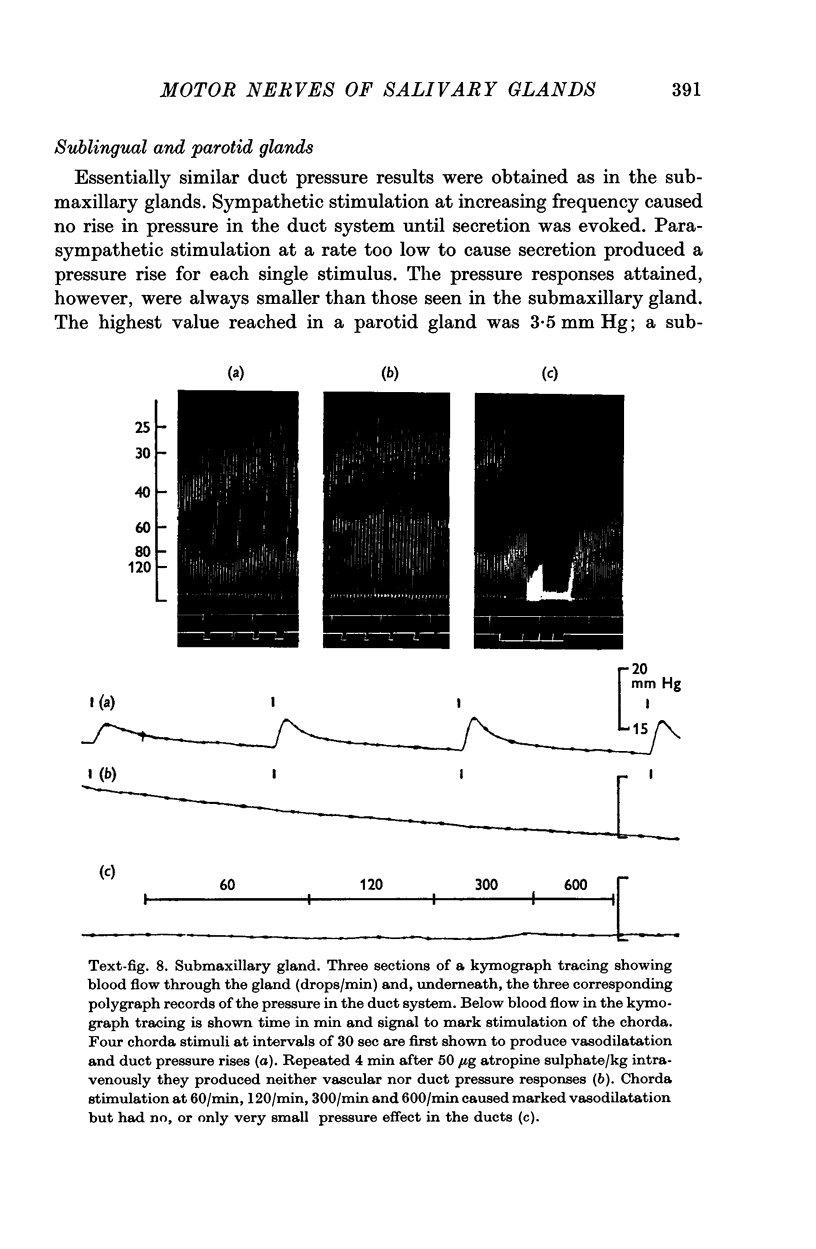
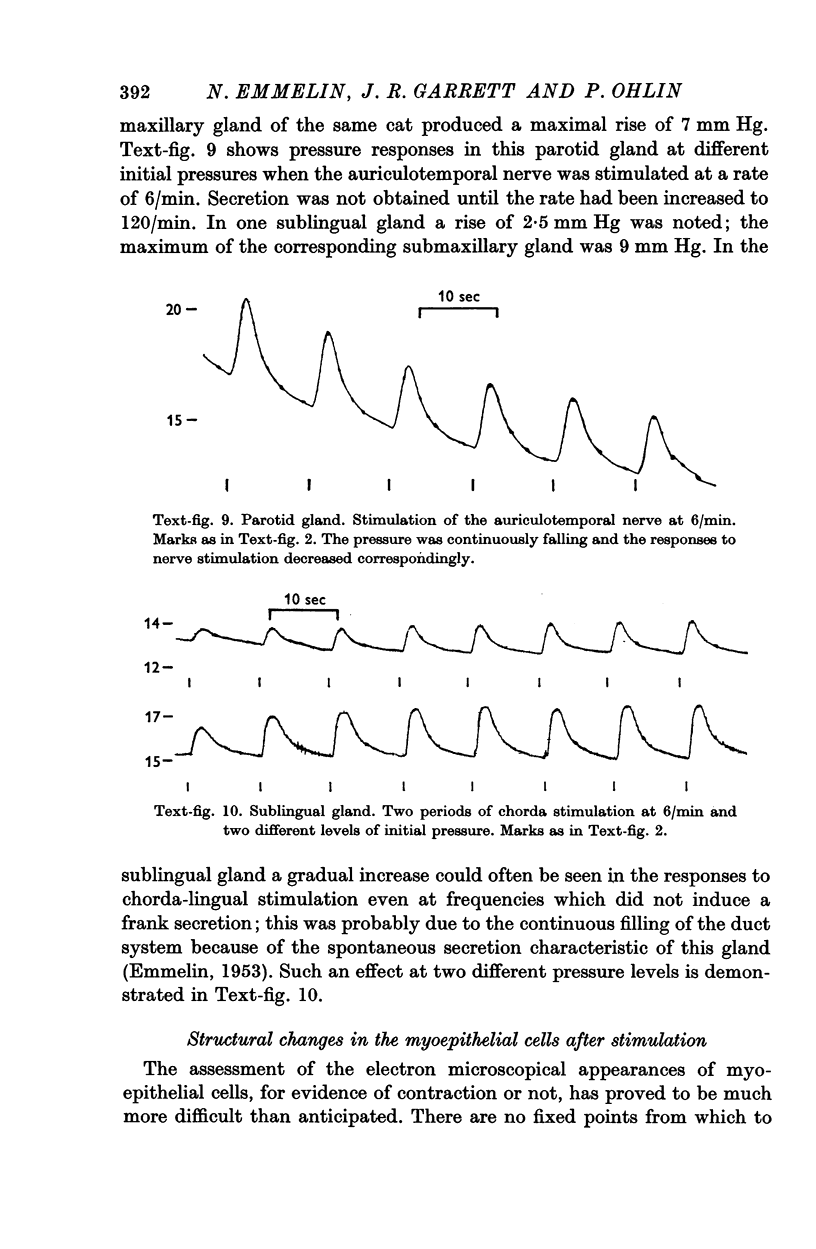
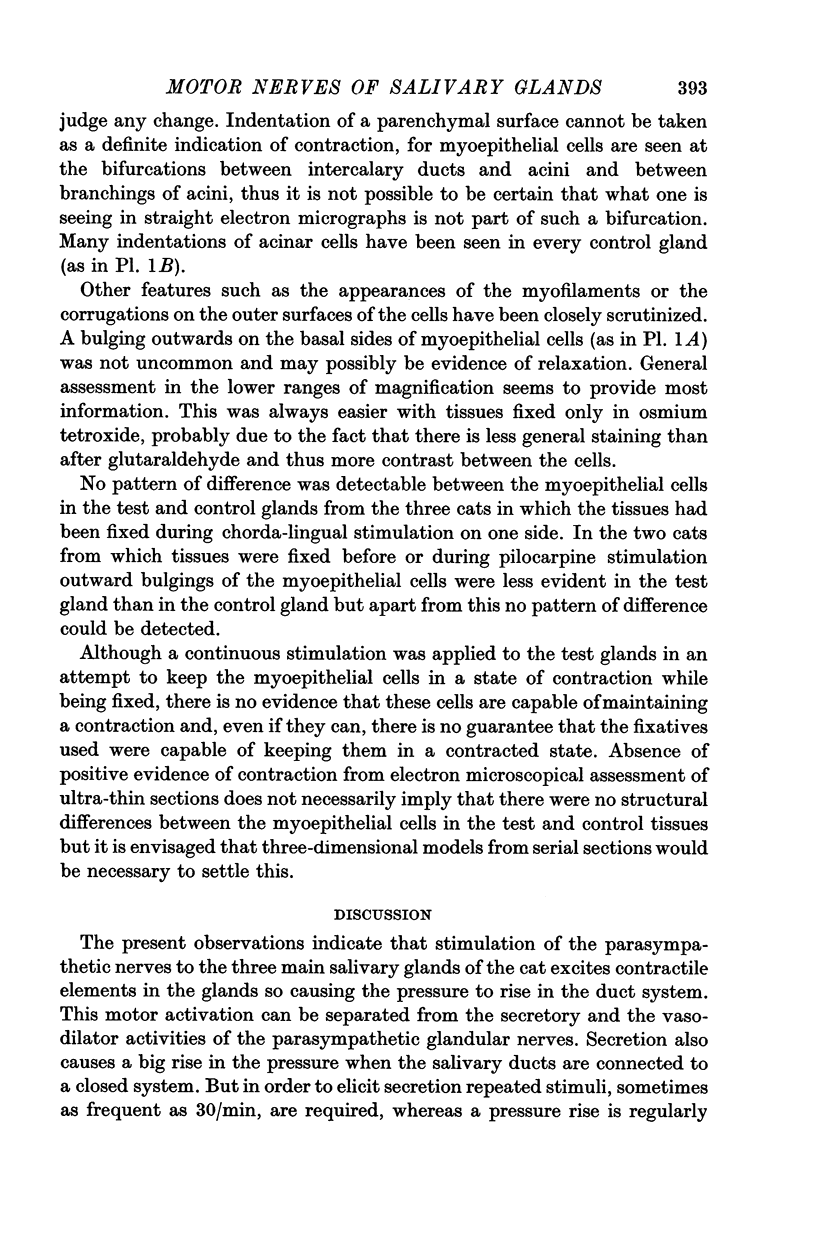
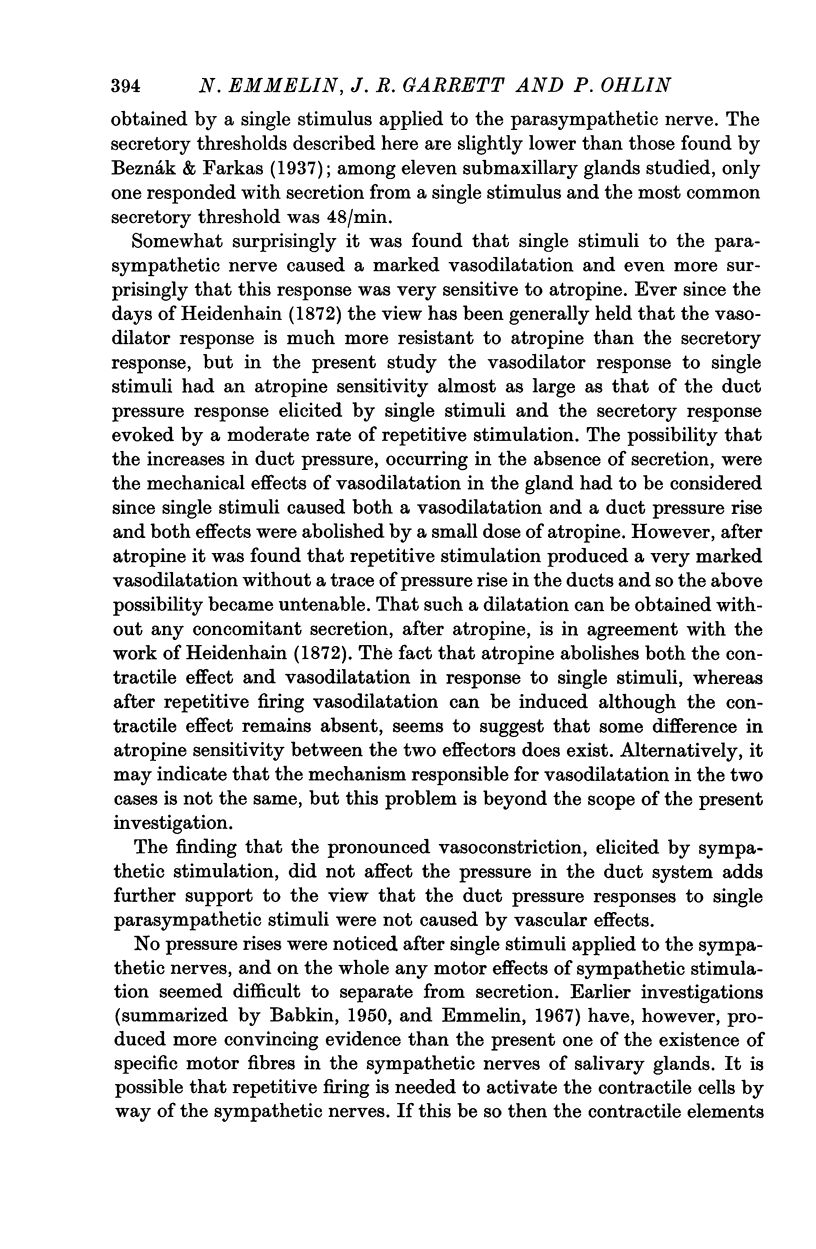
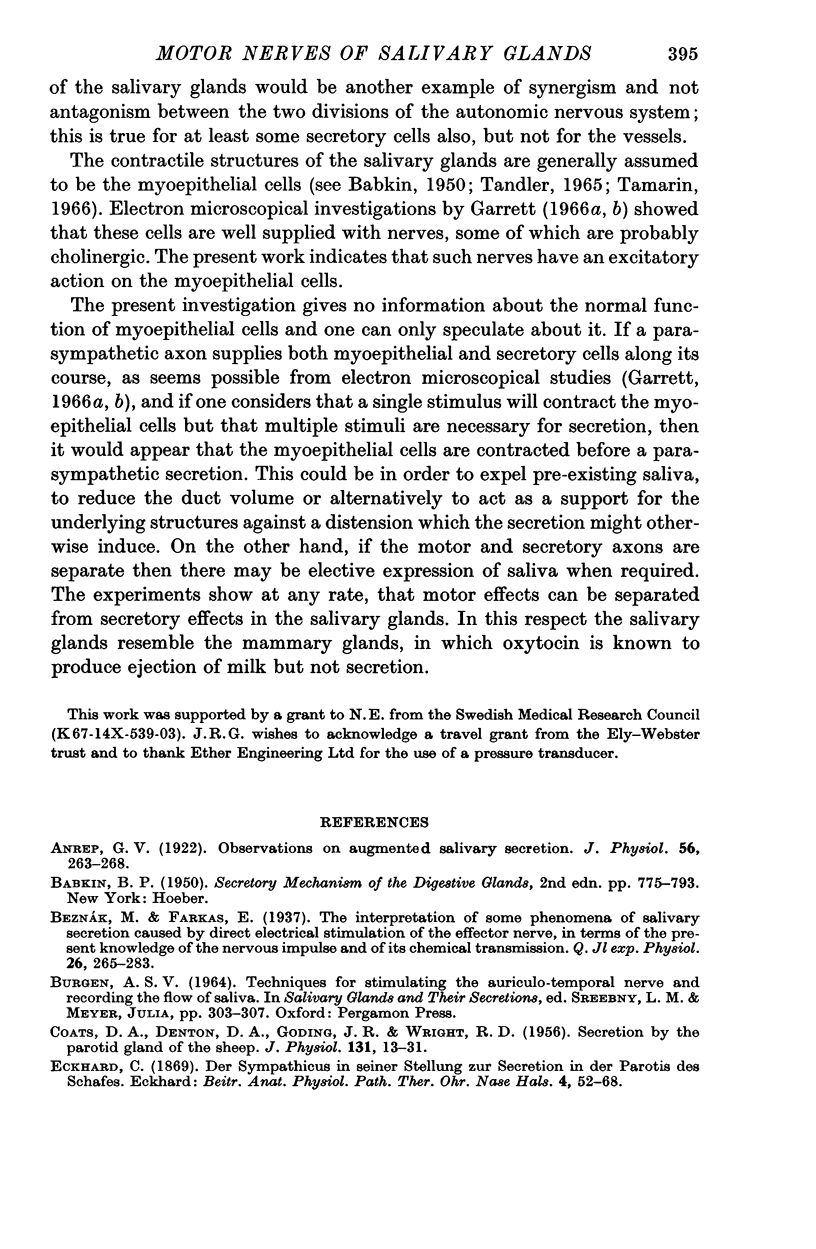
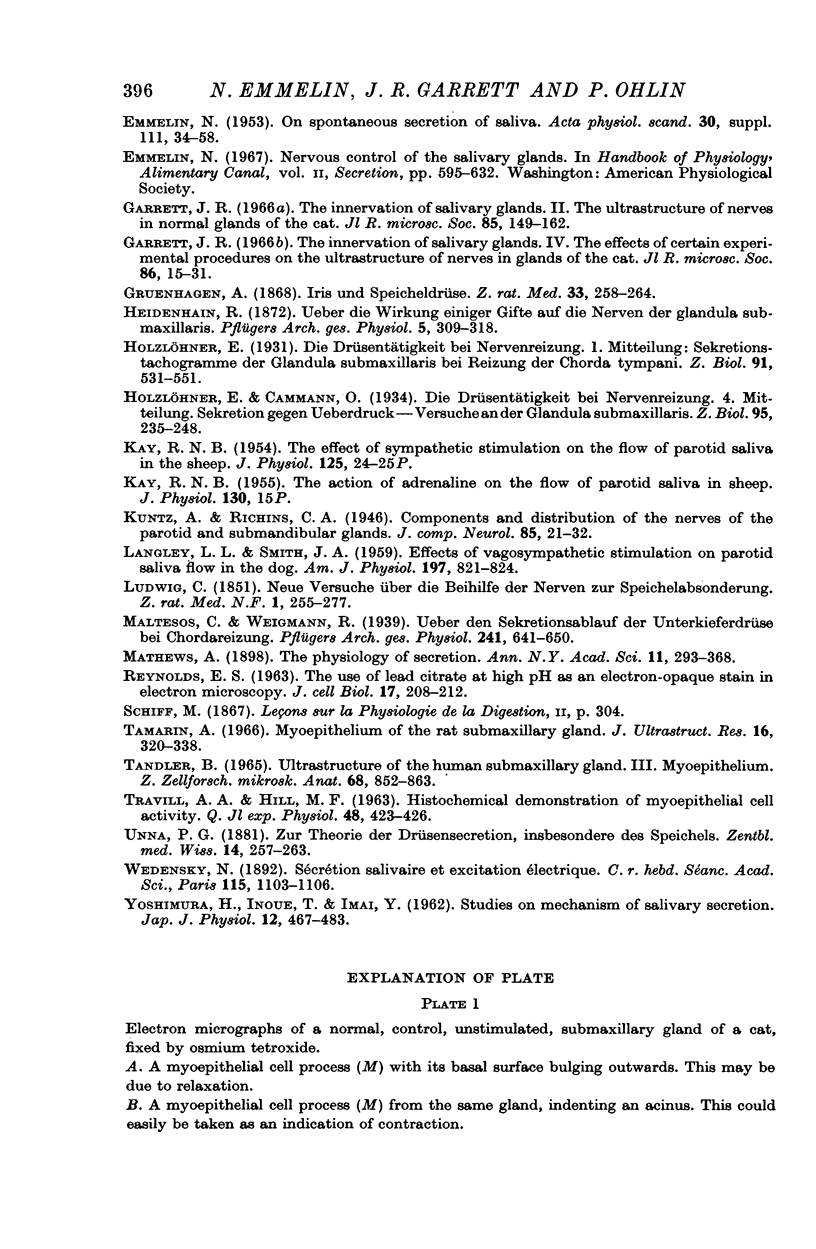

Images in this article
Selected References
These references are in PubMed. This may not be the complete list of references from this article.
- Anrep G. V. Observations on augmented salivary secretion. J Physiol. 1922 May 16;56(3-4):263–268. doi: 10.1113/jphysiol.1922.sp002008. [DOI] [PMC free article] [PubMed] [Google Scholar]
- BURGEN A. S. TECHNIQUES FOR STIMULATING THE AURICULO-TEMPORAL NERVE AND RECORDING THE FLOW OF SALIVA. Int Ser Monogr Oral Biol. 1964;3:303–307. doi: 10.1016/b978-1-4832-2871-6.50026-6. [DOI] [PubMed] [Google Scholar]
- COATS D. A., DENTON D. A., GODING J. R., WRIGHT R. D. Secretion by the parotid gland of the sheep. J Physiol. 1956 Jan 27;131(1):13–31. doi: 10.1113/jphysiol.1956.sp005441. [DOI] [PMC free article] [PubMed] [Google Scholar]
- EMMELIN N. On spontaneous secretion of saliva. Acta Physiol Scand Suppl. 1953;111:34–58. [PubMed] [Google Scholar]
- Garrett J. R. The innervation of salivary glands. IV. The effects of certain experimental procedures on the ultrastructure of nerves in glands of the cat. J R Microsc Soc. 1966 Oct;86(1):15–31. [PubMed] [Google Scholar]
- KAY R. N. The effect of sympathetic stimulation on the flow of parotid saliva in the sheep. J Physiol. 1954 Jul 28;125(1):24–5P. [PubMed] [Google Scholar]
- REYNOLDS E. S. The use of lead citrate at high pH as an electron-opaque stain in electron microscopy. J Cell Biol. 1963 Apr;17:208–212. doi: 10.1083/jcb.17.1.208. [DOI] [PMC free article] [PubMed] [Google Scholar]
- TRAVILL A. A., HILL M. F. HISTOCHEMICAL DEMONSTRATION OF MYOEPITHELIAL CELL ACTIVITY. Q J Exp Physiol Cogn Med Sci. 1963 Oct;48:423–426. doi: 10.1113/expphysiol.1963.sp001684. [DOI] [PubMed] [Google Scholar]
- Tamarin A. Myoepithelium of the rat submaxillary gland. J Ultrastruct Res. 1966 Oct;16(3):320–338. doi: 10.1016/s0022-5320(66)80066-7. [DOI] [PubMed] [Google Scholar]
- YOSHIMURA H., INOUE T., IMAI Y., YOSHIMURA F. Studies on mechanism of salivary secretion. Jpn J Physiol. 1962 Oct 15;12:467–483. doi: 10.2170/jjphysiol.12.467. [DOI] [PubMed] [Google Scholar]




